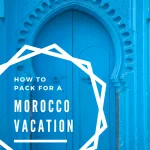One of the first questions people ask before coming is what to wear in Morocco. The answer to this varies widely. But, perhaps the most important to know is, there is no dress code in Morocco. You are not required to dress in one way or another.
People that live in Morocco dress in a wide variety of ways and do not expect visitors to dress as they do. That being said, it is always a good idea to dress more modestly than you may at home. This guide should help you better understand what to pack for Morocco.
While on the streets of major cities like Marrakech or Casablanca you may discover an “anything goes” attitude, in smaller cities and more rural areas this isn’t the case. It is easier than you may think to remain fashionable while still respecting local norms.
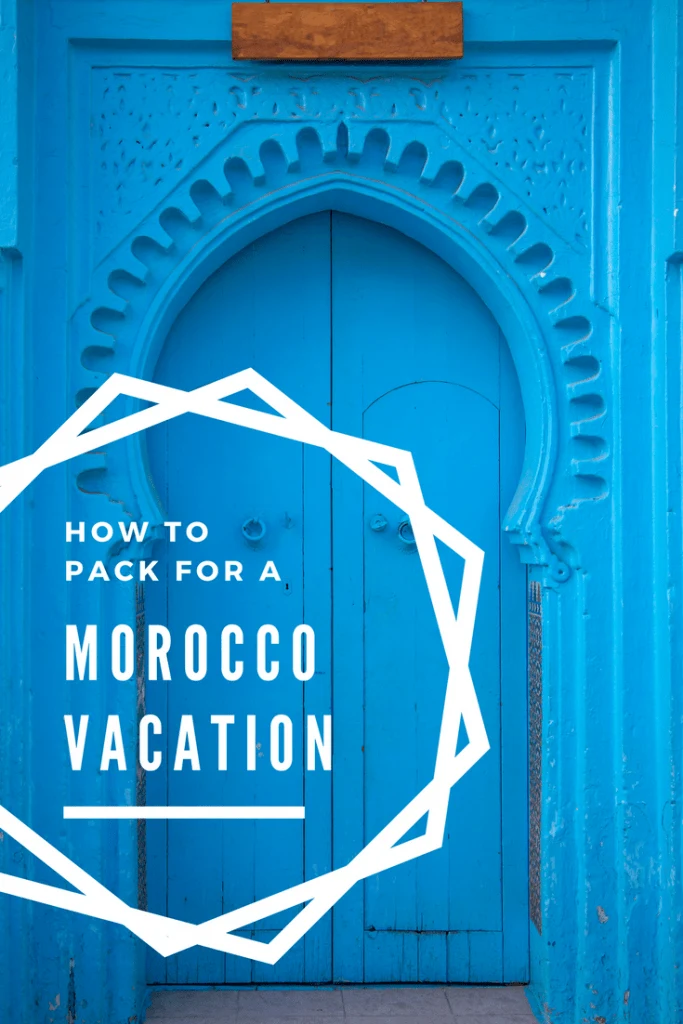
Table of Contents
How to Pack for Morocco – Seasonal and Weather Considerations
Morocco boasts a diverse range of climates due to its unique geographical features and varying elevations. From coastal regions to mountainous areas and the vast Sahara Desert, each part of the country offers a distinct weather experience. Understanding the climatic variations is crucial when planning your trip to Morocco. Let’s explore the different climate zones you may encounter:
- Mediterranean Climate:
- Found along the northern coastal areas, including cities like Tangier, Rabat, and Casablanca.
- Characterized by mild, wet winters and warm, dry summers.
- Average temperatures range from 15°C (59°F) in winter to 25°C (77°F) in summer.
- Continental Climate:
- Predominant in the inland areas, including cities like Marrakech, Fes, and Meknes.
- Exhibits greater temperature variations throughout the year.
- Summers are hot and dry, with temperatures reaching 40°C (104°F), while winters can be cold, with temperatures dropping below 0°C (32°F) in some regions.
- High Atlas Mountain Climate:
- Encompasses the Atlas Mountain range, including popular destinations like Imlil and Ouarzazate.
- Features cooler temperatures due to higher elevations.
- Winters can be extremely cold, with heavy snowfall in the highest peaks, while summers offer pleasant temperatures for hiking and outdoor activities.
- Saharan Desert Climate:
- Covers the vast expanse of the Sahara Desert, including regions like Merzouga and Zagora.
- Known for its arid conditions, with scorching temperatures during the day and significant drops at night.
- Summers can reach temperatures above 45°C (113°F), while winters are generally mild but can experience chilly nights.
Stop stressing wondering what you SHOULD know and let me tell you what you NEED to know!
By understanding these climate zones, you can better plan your activities, choose appropriate clothing, and make the most of your time in Morocco. Remember to pack accordingly for the specific regions you’ll be visiting to ensure comfort and enjoyment throughout your journey.

How to Dress in Morocco – Rural Morocco
In rural areas of the country, it’s advisable to dress more conservatively. This doesn’t mean you have to be covered head to toe or wearing traditionally Moroccan clothing. But, you should avoid wearing anything that shows off a lot of skin.
Stick to longer pants or dresses and shirts that are t-shirt length. Crop tops, short shorts, strapless tank tops, etc are best to be left for another occasion.
How to Dress in Marrakech as a Female (or any big city)
In the cities of Morocco, you will find people dressed in many different ways. You will see girls that are wearing shorts and tank tops and you’ll see women who have everything but their eyes covered. For men, the same applies.
Anything really goes however, it is advisable to be at least somewhat covered. You’ll never see a man that is shirtless and for women, keeping the chest and stomach area covered is advisable.
Also, like it or not, the less you wear the more attention you will attract, especially for women.
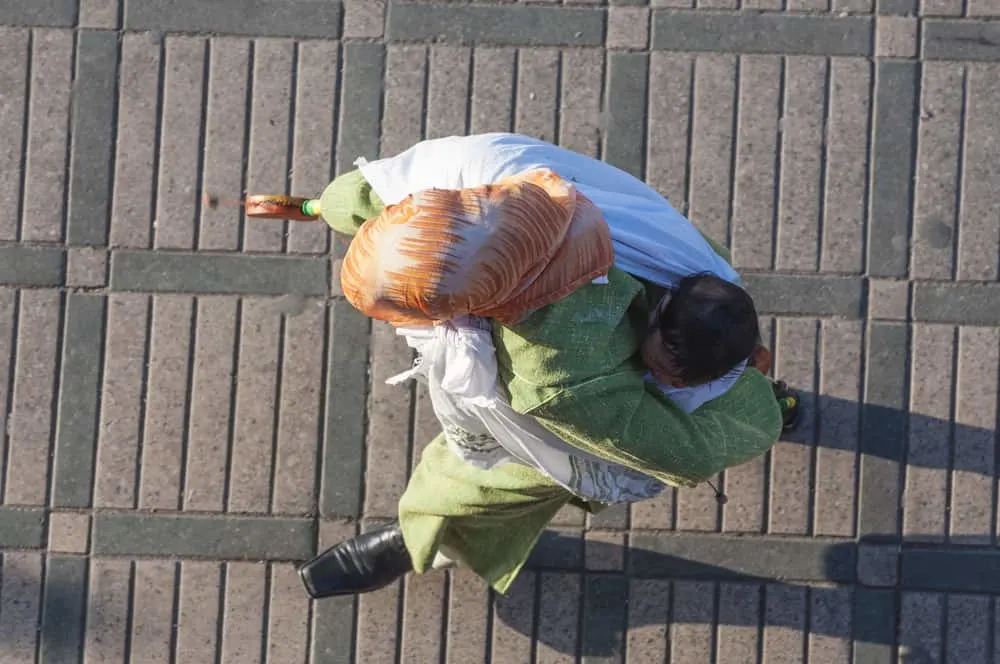
Some of the Top Questions Asked about Clothing in Morocco
Can you wear shorts in Morocco?
Yes, there is no problem with wearing shorts in Morocco. You will see this just about everywhere. However, in rural Morocco, you might want to stick with longer shorts, capri length or full length pants.
Can I Wear Sleeveless Shirts in Morocco?
While it’s important to be respectful of the local culture and customs in Morocco, sleeveless shirts can be worn in certain situations and settings. In more urban and touristy areas like Marrakech or Casablanca, you’ll generally see a variety of styles and dress codes, and sleeveless shirts are generally accepted.
However, when visiting more conservative or religious sites, such as mosques or rural areas, it’s advisable to dress more modestly and cover your arms and shoulders. Bringing a lightweight scarf or shawl that you can easily drape over your shoulders when needed is a good idea.
Overall, it’s always a good practice to be mindful of the local culture and dress appropriately for each specific occasion or location.
What should I wear when visiting religious sites or mosques in Morocco?
In reality, there are only a few religious sites in Morocco that non-Muslims are permitted to enter. When visiting these religious sites or mosques in Morocco, it’s important to dress respectfully and modestly.
Both men and women should cover their shoulders and avoid wearing revealing clothing. For women, it’s recommended to wear loose-fitting clothing that covers the arms and legs, and consider bringing a scarf or shawl to cover the head.
Men should also avoid wearing shorts and opt for long pants. It’s required to remove your shoes before entering the mosque, so you may want to keep this in mind and have a pair of socks handy or be prepared to go barefoot.
By dressing appropriately, you show respect for the religious customs and traditions of Morocco.
Do you have to cover up in Morocco?
No, you really don’t have to do anything in Morocco when it comes to clothing. Yes, it is considered more respectable to cover up a bit more however there are no rules. My advice is to have options just in case you feel uncomfortable. More modest clothing is generally preferred in Morocco.
What can I wear in Morocco?
Whatever you’d like! Do keep in mind the less clothing you are wearing the more attention you’re going to get. Also, think smart about your shoe choices. Nothing is more miserable than wobbling through a cobblestone medina on heels. Fashion is great but be smart.
☀️ Planning to visit Morocco soon? 🌵
🏨 Booking Hotels in Morocco: Booking.com, Expedia.com and Hostelworld are great options for finding and booking locations in Morocco.
💁♀️ Booking A Tour in Morocco: Check our tours first Moroccan Food Adventures! Viator and GetYourGuide have dozens of options for a few hours or full-day tours
📞 SIM Cards: I exclusively use Airalo whenever I travel – and it works great in Morocco!
😷 Travel Insurance: I like Safetywing. Another option for travelers 70+ is EKTA.
How can I dress comfortably while still respecting the local customs and traditions in Morocco?
Dressing comfortably while respecting the local customs and traditions in Morocco is definitely possible! Opt for loose-fitting and breathable clothing made from lightweight fabrics like cotton or linen.
Maxi dresses, flowy pants, and long skirts are great options for women, while men can choose lightweight trousers and shirts. Layering is key to adapt to changing temperatures throughout the day, so consider bringing a lightweight cardigan or scarf.
As for footwear, comfortable walking shoes or sandals are ideal for exploring the vibrant streets of Morocco.
Remember, it’s always a good idea to carry a scarf or shawl with you to cover your shoulders or head when needed, especially when entering religious sites or mosques.
What Shoes Should I Wear in Morocco?
When touring in Morocco, it’s important to wear comfortable and practical footwear that can handle different terrains and weather conditions. Here are some suggestions for the best footwear options:
- Comfortable walking shoes: Morocco involves a lot of walking, so make sure to wear shoes that are comfortable and supportive. Sneakers or walking shoes are a great choice for exploring cities or trekking in the countryside.
- Sandals: For warmer weather, sandals can be a comfortable and breathable option. Opt for sandals that have a strap around the ankle for added support.
- Hiking boots: If you plan to go on a trek or hike, it’s best to wear sturdy hiking boots that provide good traction and support for your ankles and feet.
- Closed-toe shoes: In areas with uneven terrain, it’s best to wear closed-toe shoes to protect your feet from rocks or debris.
- Flip flops: While flip flops may be comfortable for the beach or pool, they are not recommended for walking long distances or exploring cities as they do not provide enough support and can be slippery on uneven surfaces.
Ultimately, the best footwear choice for your trip to Morocco will depend on the activities you have planned and the weather conditions during your visit.
What do Moroccan women wear in Morocco?
Women in Morocco wear everything. Some are very traditional and wear head-to-toe veils. Others a simple headscarf, some dress conservatively but don’t wear a veil, and others yet dress like any woman or girl in Europe or North America. You’ll really see a wide range.
Can you wear a bikini in Morocco?
Sure you can. However, swimwear is kept to the beach or pool areas. It’s not really acceptable to walk around town for example in a bikini top even in a beach town. Have a coverup on hand for when you need to make those transitions.
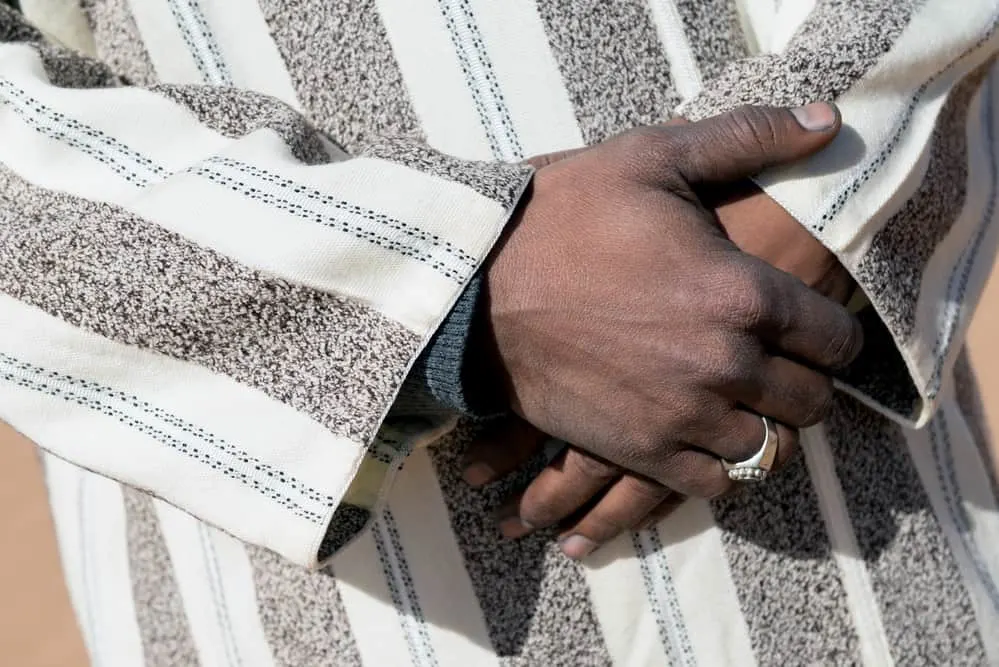
Morocco Dress Code
Spoiler alert. There isn’t one. Appropriate clothing for Morocco is really what you’re looking for. There are no laws for the country governing what you can or can’t wear.
That is except for the fact topless and nude sunbathing is illegal.
What should I consider adding to my packing list for Morocco?
Packing for Morocco can be made a little easier if you’re spending more than a week or two in the country. It may make sense to simply have your clothes washed. There are laundry facilities available, simply ask your concierge or riad owner and they will be able to help you get your clothes cleaned.
When visiting Morocco in hot temperatures, it’s important to wear loose, breathable clothing that allows air to circulate and helps to keep you cool. Lightweight, natural fabrics such as cotton, linen, and rayon are great options for staying cool and comfortable. Additionally, wearing light colors like white, beige, and pastels can help reflect the sun’s rays and keep you feeling cooler.
For women, long, flowy skirts or loose pants paired with breathable tops or tunics are great options. For men, lightweight, breathable pants or shorts paired with short-sleeved button-up shirts or breathable t-shirts are great options.

Packing for Morocco
When it comes to choosing the right luggage for your trip to Morocco, there are different options to consider based on your travel style and preferences. Here are some suggestions for carry-on bags, backpacking, and checked luggage, along with their respective pros and cons:
Carry-On Bags:
Carry-on bags are a popular choice for travelers who prefer to travel light and have their belongings with them at all times. They offer convenience and ease of movement, especially in crowded places. The pros of using a carry-on bag include:
- Portability: Carry-on bags are compact and lightweight, making them easy to carry and maneuver through airports, train stations, and busy streets.
- Cost-effective: By avoiding checked luggage fees, you can save money on your travel expenses.
- Time-saving: With a carry-on bag, you can skip the baggage claim and proceed directly to your destination upon arrival.
However, there are also some cons to consider when using a carry-on bag:
- Limited space: Carry-on bags have size restrictions, so you need to pack efficiently and be selective with your belongings.
- Liquid limitations: Due to airport security regulations, you need to adhere to the restrictions on carrying liquids in your carry-on bag.
The Best Packing Cubes for Carry on Luggage
The Best Carry-On Suitcases for Morocco
How to Pack for Two Weeks Abroad in a Carry On
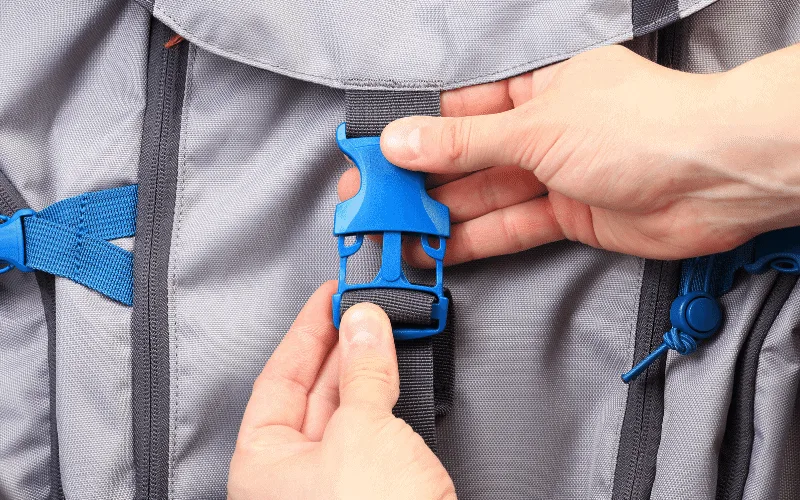
Backpacking Morocco
For those who enjoy a more adventurous and flexible travel experience, backpacking is a popular choice. Here are the pros and cons of backpacking:
- Freedom and mobility: Backpacks allow you to move easily and navigate through different terrains, including urban areas, rural landscapes, and mountains.
- Versatility: Backpacks often come with various compartments and pockets, allowing you to organize and access your belongings easily.
- Minimalistic approach: Backpacking encourages a minimalist mindset, focusing on essential items and reducing excess baggage.
However, there are some considerations to keep in mind when backpacking:
- Limited storage: Backpacks have limited space, so you need to be strategic in packing and prioritize necessary items.
- Physical strain: Carrying a heavy backpack for an extended period can be physically demanding, so ensure your backpack is comfortable and properly adjusted.
Backpacking Morocco: What to Expect on Your Adventure
Best Backpack for Traveling in Morocco
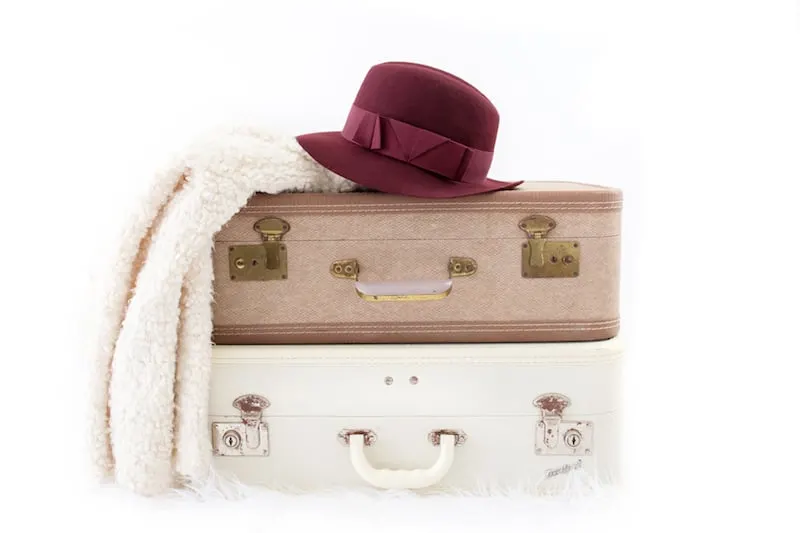
Checked Luggage:
If you prefer to bring more belongings or have specific items that require extra space, checked luggage may be the right choice. Here are the pros and cons of using checked luggage:
- More storage capacity: Checked luggage allows you to pack larger quantities of clothing, accessories, and other items.
- No size or weight restrictions: Unlike carry-on bags, checked luggage generally has more flexibility in terms of size and weight limits.
However, there are a few downsides to consider when using checked luggage:
- Waiting time: Checking in and retrieving checked luggage can take additional time at airports and can be subject to delays or mishandling.
- Potential fees: Some airlines charge fees for checked luggage, which can increase the cost of your trip.
Ultimately, the choice of luggage style depends on your personal preferences, travel needs, and the nature of your trip to Morocco. Consider the pros and cons of each option and choose the one that best suits your comfort, convenience, and travel requirements.

Seasonal Packing Suggestions for Women in Morocco
Situational Packing Information for Morocco
What to Wear in the Sahara Desert
